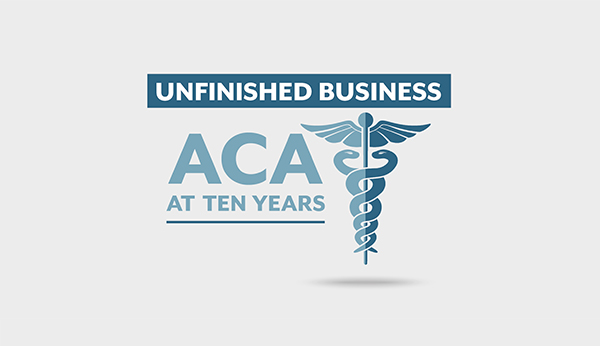ACA at 10 Years: Employer-Sponsored Insurance
Just over half of Coloradans, nearly 3 million residents, received health insurance coverage from their employer in 2019, according to the Colorado Health Access Survey. The ACA changed the rules for employers that insure this group, encouraging them to offer insurance to more employees and changing the types of plans they could offer.
The ACA aimed to maintain — and even expand — access to affordable, quality employer-sponsored insurance (ESI). Consumer protections were added as part of the ACA such as capping out-of-pocket costs and requiring coverage for essential health benefits. The ACA also employed a mix of incentives and penalties for large and small employers. Large employers (those with staff sizes of 50 or more) are required to offer affordable health insurance or face a steep penalty. Small employers are excluded from this mandate but receive tax incentives to offer coverage.
The stick has proven to be slightly more effective than the carrot in Colorado. The vast majority of large employers (94.1 percent) offered health insurance to their employees in 2018. This is a slight increase from the 92.5 percent that were offering health insurance to their employees in 2013, before the law was passed. And while the increase for large group employers was small, the ACA helped make coverage more affordable for these workers. Employers that fail to meet affordability standards can be charged $2,000 per employee per year. The requirement and penalties are a major reason Colorado’s large group employer-sponsored coverage market has grown since 2011.
By contrast, just 27.6 percent of Colorado’s small businesses — which make up more than three in four businesses in Colorado — offer insurance coverage. Fewer small businesses in 2018 are offering their employees coverage than in 2013 when nearly one in three small businesses, 30.7 percent, were offering coverage. The high cost of offering health insurance is not always offset by the ACA’s tax incentives. Businesses that can’t afford to offer coverage often send their employees to the individual market for more affordable plans. High costs to employers and the few employees who are offered and enroll in small business ESI helps explain why this figure has been decreasing over time.
But even among employees who are offered workplace coverage, gaps remain in the employer-sponsored market.
One example, known as the “family glitch,” can put employees in a tough spot where neither employer coverage nor the individual market offers an affordable option for their families. This happens when a working family member is offered employer-sponsored coverage that is defined as affordable for that individual employee — costing less than 9.78 percent of household income — but the cost of covering dependents on the plan is higher. Having access to a plan that technically meets the affordability threshold but does not offer affordable coverage for all family members makes that family ineligible for subsidies on the individual market. The result can be steep monthly premiums and no financial aid.
A federal law passed in 1974 also limits the impact of the ACA on employer-sponsored plans: the Employee Retirement Income Security Act, or ERISA. ERISA, which places self-funded employer plans under a different set of federal rules, regulated 61 percent of all employer-sponsored plans in 2019. ERISA plans are excluded from many protections required by the ACA, such as offering coverage for all essential health benefits and meeting affordability standards. Oversight from ERISA has hampered the ACA’s efforts to increase employee access to affordable and comprehensive plans. ERISA survived attempts to enforce compliance with ACA reform through two Supreme Court challenges. The interaction between ERISA and ACA regulations paints a complex picture of what happens when multiple federal insurance reform efforts collide. Future reform efforts targeting the private health insurance market will have to involve serious consideration about navigating ERISA regulations, unless policymakers push to remove them entirely.
Next week, CHI shifts from analyzing changes in insurance coverage to exploring policies, efforts, and outcomes in Colorado related to the ACA’s focus on preventive care.


